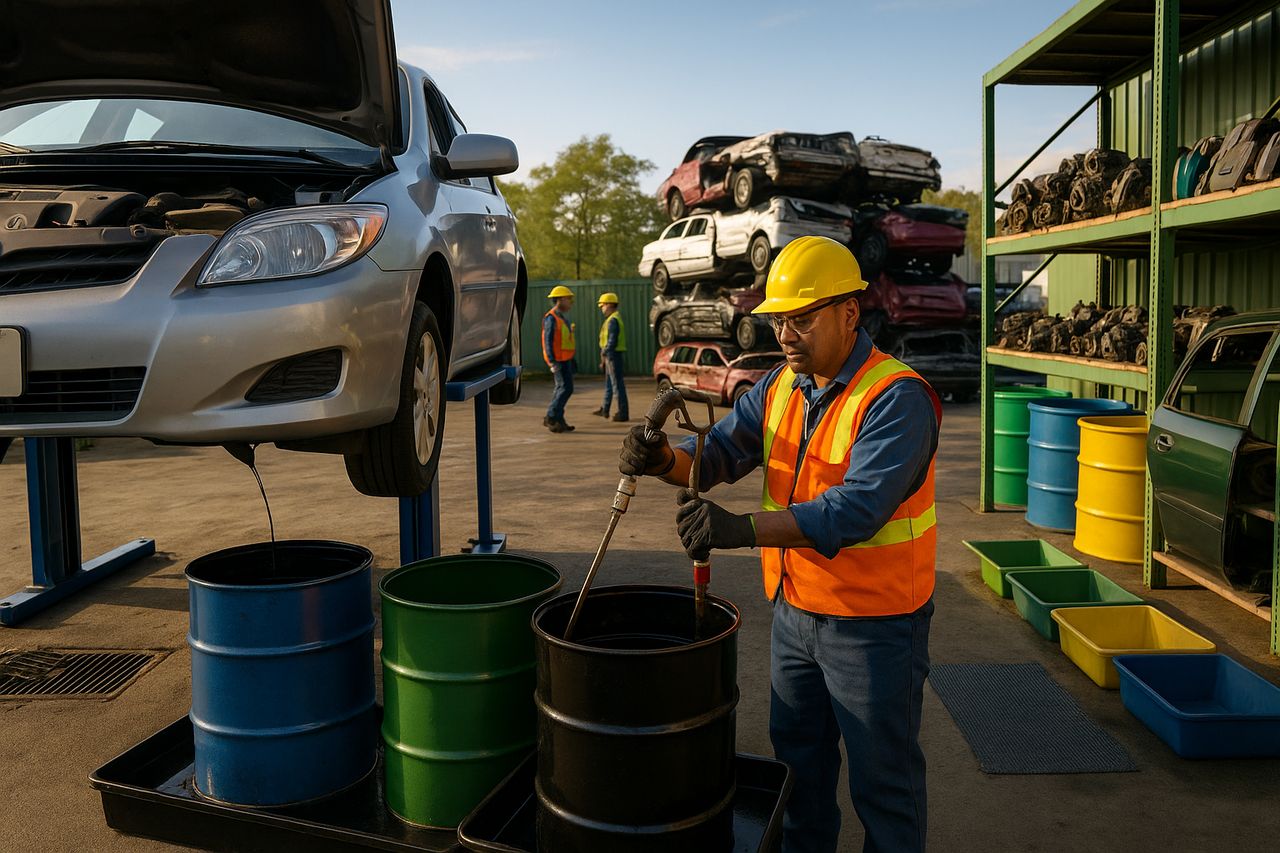
15 Oct Recycling Your Vehicle: The Environmental Benefits of Using Wrecking Yards
When a vehicle reaches the end of its lifespan, many see it as nothing more than a heap of metal and parts. But in the hands of a skilled wrecking yard, that same vehicle transforms into a valuable resource that benefits the planet. Wrecking yards specialize in the dismantling, recycling, and repurposing of vehicles in a way that minimizes environmental harm while maximizing resource recovery.
The process begins with careful de-pollution removing hazardous fluids, oils, and chemicals to prevent soil and water contamination. Salvageable parts are removed, refurbished, and reintroduced into the market, reducing the demand for newly manufactured components. Metals such as steel, aluminum, and copper are separated, processed, and sent back into production cycles. This approach not only saves raw materials but also significantly reduces the carbon footprint associated with mining and manufacturing.
What Happens When You Recycle Through a Wrecking Yard
Recycling your vehicle through a wrecking yard is more than just disposing of an old car it’s an environmentally responsible decision. When a car arrives at a wrecking yard, it undergoes a multi-step process:
- Initial Assessment & Valuation – Professionals determine which components can be reused or resold.
- Hazardous Waste Removal – Oils, coolants, transmission fluids, and refrigerants are carefully extracted.
- Parts Salvage – Usable parts like alternators, transmissions, and doors are refurbished for resale.
- Metal Recovery – Ferrous and non-ferrous metals are separated and recycled.
- Final Shredding – The remaining shell is crushed and processed for further material extraction.
Every step ensures minimal waste, contributing to a circular economy where resources remain in use longer rather than ending up in landfills.
Why Choosing a Wrecking Yard Benefits the Environment
Opting for a wrecking yard instead of abandoning or scrapping your vehicle improperly has far-reaching environmental benefits:
- Reduced Mining Demand – Recycled metals reduce the need for new mining operations, conserving natural landscapes and reducing habitat destruction.
- Lower Energy Consumption – Producing metals from recycled materials consumes far less energy compared to raw material extraction.
- Pollution Prevention – Proper fluid disposal prevents hazardous leaks into the environment.
- Resource Efficiency – Salvaging parts extends their lifespan and reduces the need for new manufacturing.
Where the Environmental Impact is Most Noticeable
The influence of wrecking yards stretches far beyond the automotive sector. Industries like construction, manufacturing, and consumer goods all benefit from recycled metals sourced from vehicles. The construction industry, for example, uses recycled steel from cars in building frameworks, bridges, and infrastructure projects.
In manufacturing, aluminum from old vehicles becomes part of new electronics, appliances, and even aerospace components. The ripple effect is enormous,by recycling through wrecking yards, the supply chain for multiple industries becomes greener and more sustainable.
When Recycling Through Wrecking Yards Makes the Biggest Difference
The sooner a vehicle is recycled after it becomes non-functional, the greater the environmental benefits. Cars left to deteriorate in driveways or junk lots leak hazardous fluids over time, causing irreversible environmental damage. Recycling promptly prevents this and ensures more parts and materials remain salvageable, maximizing the benefits to both the environment and the economy.
Who Makes It All Possible
Behind the scenes, trained dismantlers, environmental technicians, and recycling specialists ensure the process meets strict safety and environmental standards. These professionals have the expertise to safely handle hazardous materials, efficiently dismantle vehicles, and maximize the recovery of valuable resources. Without their knowledge and precision, much of the environmental value would be lost.
The Advantages of Wrecking Yards Over Other Disposal Methods
While some may consider selling a vehicle for scrap or leaving it in storage, wrecking yards offer a structured, eco-friendly, and resource-conscious approach. Unlike informal disposal methods, wrecking yards comply with environmental regulations, ensuring every component is either reused or recycled in a controlled manner.
| Aspect | Wrecking Yard Recycling | Improper Disposal |
| Environmental Compliance | ✔ Yes | ✖ No |
| Resource Recovery | ✔ High | ✖ Low |
| Pollution Risk | ✖ Minimal | ✔ High |
| Economic Benefit | ✔ Supports multiple industries | ✖ Negligible |
The Practical Role of Wrecking Yards in Sustainability
In the bigger picture of environmental responsibility, wrecking yards act as vital hubs in the recycling network. They bridge the gap between discarded vehicles and new manufacturing, feeding the economy with raw materials while preventing environmental harm.
Practical applications include:
- Steel Reinforcement – Recycled steel strengthens new buildings and infrastructure.
- Aluminum Production – Lightweight aluminum from cars supports the production of energy-efficient appliances.
- Copper Reuse – Copper wiring is recovered and used in renewable energy systems and electronics.
Chart – Environmental Savings from Vehicle Recycling
| Material | Energy Savings vs. New Production | CO₂ Reduction |
| Steel | 60–74% | 58% |
| Aluminum | 92–95% | 90% |
| Copper | 85% | 65% |
Recycling vehicles through wrecking yards is more than just a disposal choice,it’s a commitment to environmental stewardship. Every car processed through a wrecking yard means fewer raw materials extracted, less energy wasted, and a cleaner planet for future generations.
By making this choice, you contribute to a greener economy, protect natural ecosystems, and ensure valuable resources continue their lifecycle rather than ending up as waste.
Call Now to Recycle Your Vehicle the Right Way – Contact +1 323-566-5184 Today


